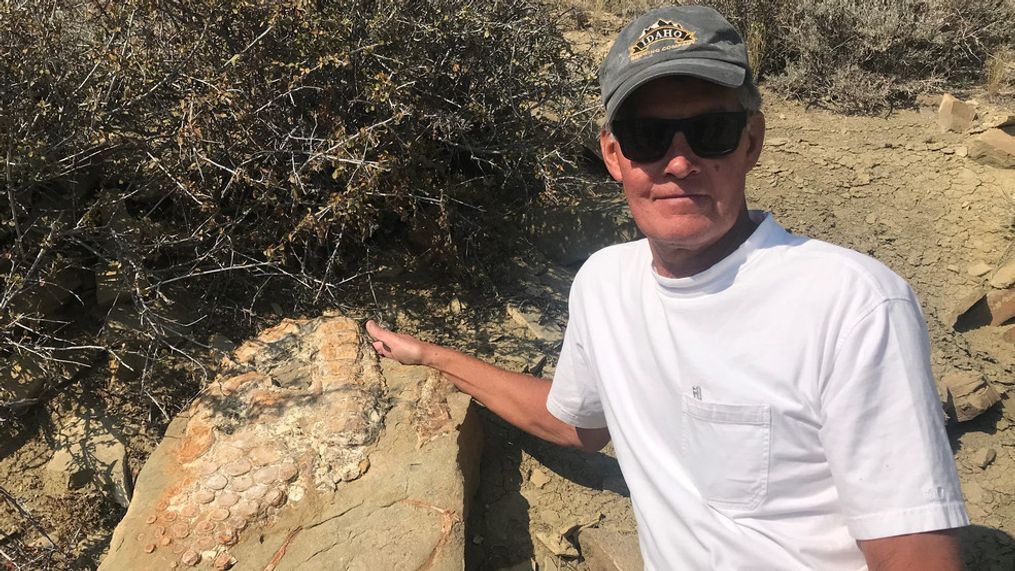Utah boater finds fossilized 'fish-lizard' at Flaming Gorge
VERNAL, Utah (KUTV) — A team of paleontologists from Utah State Parks recently recovered part of a fossilized marine reptile from the shores of Flaming Gorge Reservoir in northeastern Utah thanks to the keen eye of a local boater.
The fossil was first spotted by Alan Dailey, from Hooper, who was boating at the reservoir in May. Dailey contacted state paleontologists and sent photos of the fossil as he had left it in the field.
When experts arrived on the scene, they found that Dailey had discovered the fossilized forefin, vertebrae and ribs from an animal known as an ichthyosaur, or "fish-lizard," that lived in the seaway in the Flaming Gorge region during the Late Jurassic epoch.
Ichthyosaurs were not dinosaurs but marine reptiles that swam in the seas of the Mesozoic era from the times of the first dinosaurs to shortly before the extinction of the dinosaurs — a time span of almost 130 million years.
Dailey's ichthyosaur was dolphin-sized and although it was a reptile, it was similar to dolphins with its long snout and conical teeth, streamlined body and tail built for speed, according to a news release issued by Utah State Parks Tuesday afternoon.
Other ichthyosaurs have been discovered in Utah previously, but those finds consisted mostly of isolated vertebrae.
The ichthyosaur discovered by Dailey includes the nearly complete and articulated forefin, plus 10 ribs and 19 articulated vertebrae, making it "one of the better ichthyosaur specimens known from the state," experts with Utah State Parks said.
"The ichthyosaur was found in sandstone that also preserved fossils of oysters and squid-like belemnoids (extinct creatures related to modern-day squids) that lived in the seaway at the same time," Museum Curator John Foster, of the Utah Field House of Natural History, said.
“It is not often you see an entire fin laid out in the rock like that — so it is fun to be able to imagine a fast-swimming ichthyosaur chasing prey through the warm seawater in our region so long ago.”
It took quite a bit of manpower to wrestle the 400-pound block of sandstone containing the fossil into a boat on the shoreline. Luckily, the collections team was assisted by a skilled forklift operator at Lucerne Marina who was able to unload the boat and gently set the fossil block in the back of a museum truck for transport.
Dailey's fossil find is now safely residing in the Utah Field House of Natural History in Vernal.
The next steps for the Dailey ichthyosaur specimen will be for lab workers to clear rock covering some of the bones to better expose the skeleton. This will give paleontologists a better indication of what species of ichthyosaur the specimen is.
The fossil will eventually be on exhibit at the museum.




